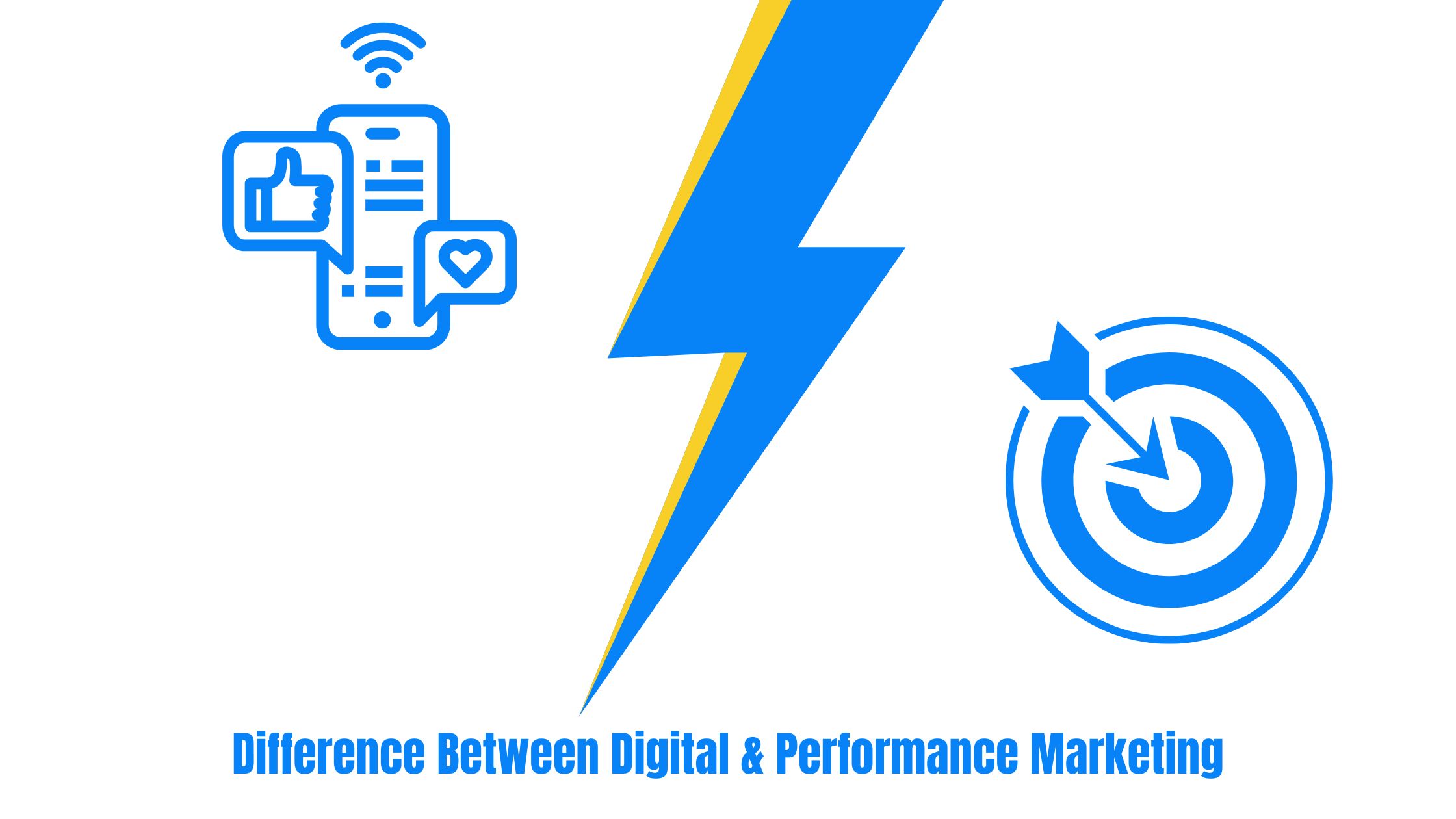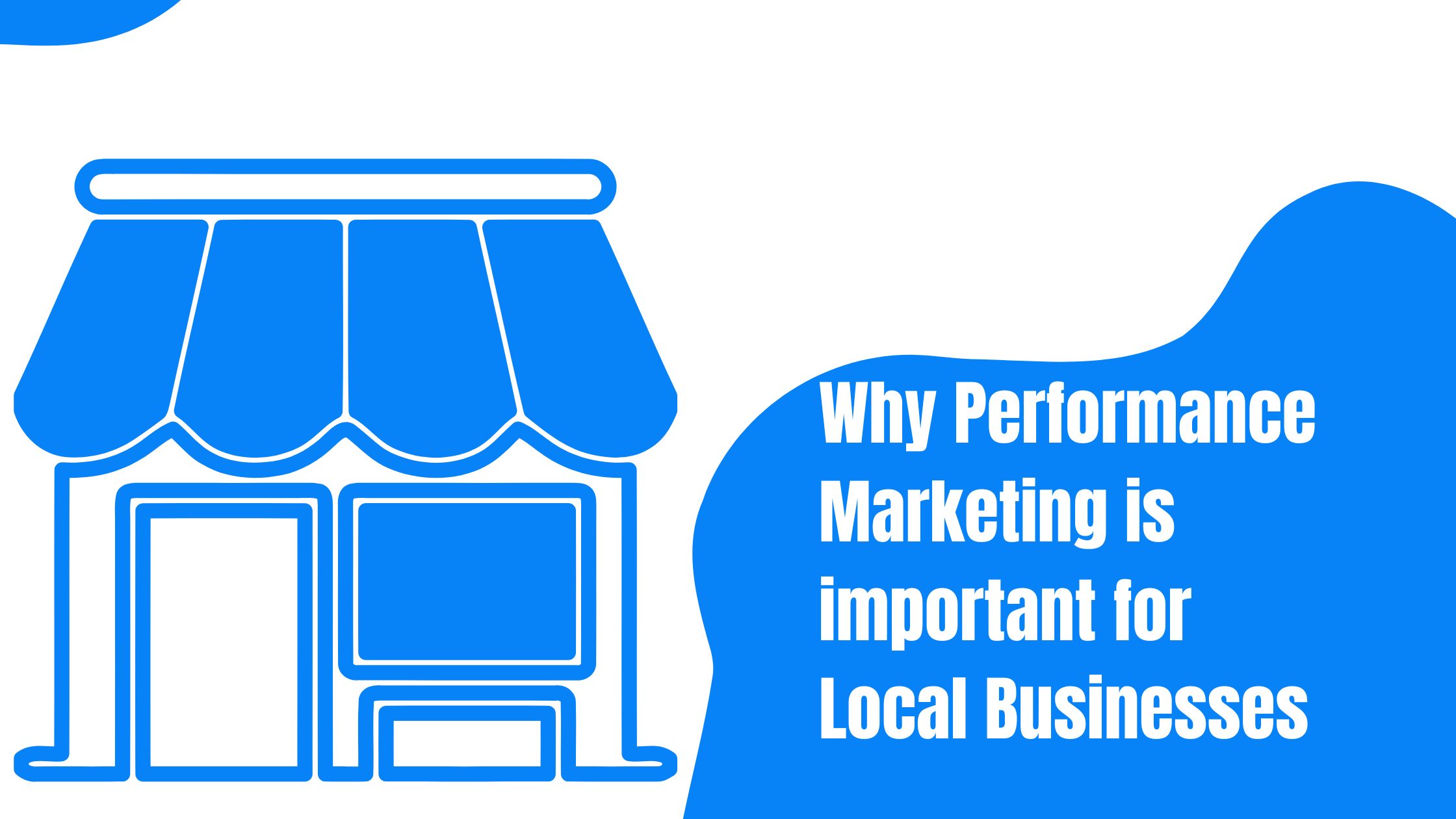Difference Between Digital Marketing and Performance Marketing: A Comprehensive Guide
Digital marketing and performance marketing are two popular terms in the online marketing world. Though they share similarities, each serves a unique purpose within the digital marketing ecosystem. In this guide, we’ll explore the key differences between digital marketing and performance marketing, their respective strategies, goals, and best-use cases to help you decide which approach is right for your business.
What is Digital Marketing?
Digital marketing is a broad, umbrella term that encompasses all online marketing efforts aimed at promoting a brand, product, or service. Digital marketing spans a wide range of strategies, including content marketing, social media, search engine optimization (SEO), email marketing, and paid advertising.
Key Aspects of Digital Marketing:
- Brand Awareness: Digital marketing focuses on creating a brand presence and establishing trust among target audiences.
- Long-Term Goals: The goal is often to build brand loyalty, engage audiences, and establish a strong online reputation over time.
- Multiple Channels: Digital marketing strategies typically use a variety of channels, such as social media, blogs, email, SEO, and paid ads, to create a cohesive brand experience.
- Measurement: Success is measured by metrics like website traffic, engagement, brand visibility, and audience growth.
Examples of Digital Marketing:
- Running a blog on industry trends to attract organic search traffic.
- Managing a social media page to engage followers and foster brand loyalty.
- Email marketing campaigns that nurture leads and inform customers about new offers.
Key Takeaway: Digital marketing focuses on building a sustainable online presence, promoting brand recognition, and engaging audiences over the long term.
What is Performance Marketing?
Performance marketing is a subset of digital marketing that focuses on measurable, results-driven outcomes. In performance marketing, advertisers pay only when a specific action is completed, such as a click, sign-up, lead generation, or sale.
Key Aspects of Performance Marketing:
- ROI-Driven Goals: Performance marketing aims to generate a return on investment (ROI) through actions like clicks, leads, or conversions.
- Short-Term, Measurable Outcomes: Campaigns are typically optimized for immediate results, making it ideal for businesses that want fast, measurable outcomes.
- Cost Control: Advertisers pay only when a defined action takes place (e.g., Cost Per Click or Cost Per Conversion).
- KPIs: Common KPIs in performance marketing include Cost Per Acquisition (CPA), Return on Ad Spend (ROAS), and Conversion Rate.
Examples of Performance Marketing:
- Running a Google Ads campaign targeting specific keywords to drive conversions.
- Facebook retargeting ads designed to bring users back to complete a purchase.
- Affiliate marketing campaigns where partners promote products and earn commissions based on sales.
Key Takeaway: Performance marketing is laser-focused on achieving specific, measurable actions to maximize ROI, making it ideal for businesses that seek short-term gains.
Digital Marketing vs. Performance Marketing: Key Differences
| Aspect | Digital Marketing | Performance Marketing |
|---|---|---|
| Objective | Build brand awareness and engage audiences long-term | Drive specific, measurable actions like clicks or sales |
| Time Horizon | Long-term strategy | Short-term, ROI-focused strategy |
| Measurement | Engagement, reach, audience growth | CPC, CPA, ROAS, Conversion Rate |
| Cost Structure | Often includes brand-building efforts that are harder to track | Payment based on specific actions (clicks, sales) |
| Ideal for | Brand-focused businesses, content-driven strategies | ROI-driven businesses with immediate performance goals |
Choosing Between Digital Marketing and Performance Marketing
Both digital marketing and performance marketing play crucial roles in a well-rounded marketing strategy. Here’s how to decide which one is right for your business:
If You Need Long-Term Brand Building: Choose digital marketing to build awareness, engagement, and loyalty. It’s ideal for businesses focused on cultivating customer relationships and establishing a recognizable brand.
If You Need Short-Term, Measurable Results: Opt for performance marketing if your goal is to generate leads, sales, or conversions quickly. This approach is effective for businesses looking for direct, ROI-focused outcomes with trackable metrics.
Using Both for a Balanced Approach: Many successful businesses integrate both digital and performance marketing. For example, a brand may use content marketing (digital) to attract organic traffic while simultaneously running Google Ads (performance) to drive conversions on high-intent keywords.
Why Combining Both Strategies is Often Best
Combining digital and performance marketing can maximize your reach and results. Here’s why:
- Increased Brand Visibility: Digital marketing tactics like SEO and social media build brand awareness, helping you reach a broad audience.
- Enhanced Conversions: Performance marketing can drive targeted traffic from your digital efforts, increasing the likelihood of conversions.
- Effective Resource Allocation: A blended strategy allows you to allocate resources to both short-term performance goals and long-term brand growth, maximizing overall marketing ROI.
Final Thoughts on Digital Marketing vs. Performance Marketing
In today’s competitive market, understanding the difference between digital marketing and performance marketing is key to crafting an effective strategy. Digital marketing sets the foundation by building a trusted brand, while performance marketing provides immediate results. By leveraging both strategies, businesses can achieve long-term growth and short-term wins, creating a well-rounded, sustainable marketing approach.
Ready to optimize your marketing strategy? Start by identifying your goals, understanding your audience, and choosing the right combination of digital and performance marketing techniques to drive success.
Frequently Asked Questions (FAQs)
Q1: Can digital marketing and performance marketing be used together? Yes, using both strategies can help you build brand awareness while also generating measurable results. This balanced approach is often the most effective.
Q2: What is a key metric for performance marketing? Common performance marketing metrics include Cost Per Click (CPC), Cost Per Acquisition (CPA), and Return on Ad Spend (ROAS).
Q3: Which is better for long-term growth? Digital marketing is typically better for long-term brand growth, while performance marketing is suited for immediate, measurable outcomes.
This guide has outlined the core differences between digital marketing and performance marketing, along with tips for integrating both approaches. By leveraging these strategies, you can build a powerful marketing foundation that supports your business’s unique goals and growth trajectory.











